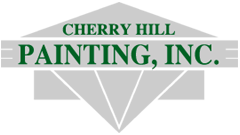Getting tasks in the right order is an important part of any job, whether you are preparing a recipe or changing the oil in a car. When it comes to interior house painting, there are certain steps that must always be done in the same order. Is that true for painting walls and trim? Or can you decide for yourself which part of the interior painting project comes first?
The truth is, if you ask any two random house painters in the New Jersey area, they are likely to give you two different answers! This is partly because each interior painting company has its own preferences, and partly because each job has different characteristics.
Let’s take a look together at some of the considerations that can help you decide whether to start your interior painting with the walls or the trim.
You Only Want to Tape Once
When two adjacent surfaces are going to be painted different colors, you are going to need to use painter’s tape to “mask off” one of them. This creates a straight line and a clean border between the two areas. However, this taping process takes time, and you don’t want to do it twice if you don’t have to.
Some house painters prefer to start by painting the trim, and they don’t tape off the walls. They can paint quickly, and if any paint gets on the wall, they know they can easily paint over it when it is time to paint the walls. They save the taping for the next stage, carefully masking off the trim before they paint the walls.
Other interior painters prefer to do the reverse of this process. They first paint the walls, not worrying about any extra paint that gets on the trim, then they mask the walls prior to painting the trim.
Both of these methods are valid, but there is one extra piece of information to keep in mind. Trim is usually painted with a glossier sheen than the walls are. If you get some of that glossy paint on the walls, there is a chance it will show through the paint later on. This is not the case if you get wall paint on the trim. This gives some extra support to the “walls-first-trim-later” camp.
The “Top Down” Principle
Another consideration to keep in mind is gravity. Drips, splatters and runs generally tend to go downwards. For that reason, house painters almost always start at the top of a wall or room and work their way downwards. That way, if there are any stray drops, they land on areas that will be painted later, rather than on places that are already done.
This idea supports the notion that you might do better to start with the highest item. If you have crown molding, do that first, then the walls, then the baseboards.
What About New Construction or Renovations?
If your trim has not been installed (or reinstalled) yet, paint your walls before it goes on. This makes the wall painting process very quick and easy, since you can use the roller right up to the edges and not worry about the trim. You can also paint all your trim beforehand, lining it up on sawhorses or scraps of wood for efficient painting.
When you do it this way, there will be some small damage (nail holes, etc.) to the trim as you install it. However, this is easy to touch up after the installation, and the amount of time you save is definitely worthwhile.
Cherry Hill Painting
We might be biased, but it is our opinion that the best first step for any painting project is to contact Cherry Hill Painting! Why would you contact us for your interior painting project?
- Spectacular results, guaranteed!
- Efficient completion of the project
- Far less time and effort on your part
- Fully trained craftsmen
- Licensed and insured company
- Wide range of services
Cherry Hill Painting has been serving New Jersey and the Philadelphia area since 1968. In addition to interior painting, we also offer exterior painting, cabinet refinishing, wallpaper removal, and more. Contact us for a free, no-pressure estimate for your next house painting project. You won’t regret it!

